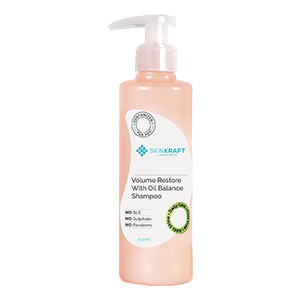You may be investing in premium and bespoke hair care products. But lustrous and voluminous hair is possible to achieve only if your hair is healthy from within. By within, we mean the health of your scalp.
To understand and maintain scalp health, let us get a clear picture of the different layers of your scalp in this blog post. Here we go!
What Are The Five Layers Of The Scalp?
Your scalp is formed by layers of skin and subcutaneous tissue that covers the bones of the cranial vault. The scalp is soft tissue and acts as a barrier to protect the cranial vault from physical trauma or infectious agents.
Of the 5 layers of the scalp [1], the first three are firmly held together as a unit. The layers of the scalp can be remembered using the mnemonic SCALP:
S - skin
C - connective tissue
A - aponeurosis
L - loose connective tissue
P - pericranium or periosteum
1. Skin
The skin [2] contains several hair follicles and sebaceous glands. A gland is a group of cells that synthesize chemicals needed for bodily functions. Sebaceous glands secrete sebum or natural oil that lubricates the scalp.
2. Connective Tissue
Dense connective tissue [3] or superficial fascia, is made of a subcutaneous layer of fat, blood vessels, nerves and lymphatic system. Hair follicles extend to this layer.
3. Aponeurosis
Epicranial Aponeurosis or galea aponeurotica is a fine yet tough layer that keeps the frontalis muscles and occipitalis connected.
Action Of Occipitofrontalis Muscle [4]:
A. Frontal belly
- Moves the scalp forward
- Raises the eyebrows (think 'surprised look')
- Causes horizontal wrinkles on the forehead
B. Occipital belly
- Moves the scalp backward
4. Loose Areolar Connective Tissue
Loose Areolar Connective Tissue is crucial for the mobility of the scalp. It acts as a flexible plane separating the three other layers from the pericranium [5]. Cells in this layer are plasma cells, mast cells and adipocytes. This layer is considered a ‘danger zone’ because when infected, it can spread easily in the whole tissue and can pass on the underlying pericranium.
5. Pericranium
Periosteum [6] is the outer layer of the skull bones (pericranium). It is a dense and irregular connective tissue that adheres to the calvarial bone of the skull. It has a vascular supply that supports the underlying calvarium.
It has two layers; the fibrous layer (outermost) and the cambium layer, which is the innermost layer.

Tips To Keep Your Scalp Healthy
- Exfoliate your scalp regularly to boost skin cell turnover. It is important that dead skin cells shed to reveal a fresh layer of skin cells. Choose from exfoliating shampoos to hair scrubs to homemade scrubs.
- Massage your scalp to promote blood circulation. Blood carries the necessary nutrients and oxygen to your scalp and promotes healthy hair growth. Use your fingertips and your favorite oils to massage your scalp in circular motions for 5-10 minutes.
- Retain moisture in your scalp. Most scalp issues arise from a dry scalp. Make sure you oil your hair, invest in deep conditioning treatments and stay away from hot showers that strip off the sebum on the scalp.
- Clean your scalp using a gentle shampoo once every 1-2 days if you have an oily scalp and once in 3-4 days if you have a dry scalp. Cleansing helps in removing the dirt, excess oil, dead skin cells and product buildup on the scalp.
- Protect your scalp from the harsh sun rays using a hat or a scarf. The skin on the scalp is prone to sun damage. You can also choose a shampoo containing sunscreen.
- Limit heat styling and chemical treatments as these can irritate your scalp over time. Opt for natural hairstyles whenever there is a chance.
- Switch to a healthy and balanced diet to boost your scalp health. Include vitamin B, A, E, iron, zinc and protein in your diet. Foods that are beneficial for your scalp include eggs, fish, nuts, green leafy vegetables and fresh fruits.
Wrapping Up
Your scalp is a soft tissue protecting the inner layers of your head, besides growing hair from the follicles. Good hair care routines like cleansing, massaging and oiling ensure that there is an adequate supply of blood to the scalp. And, a healthy scalp is a precursor to healthy hair. Protect it, embrace it and flaunt it!
Recommended Products
Was this Article helpful?
- Least helpful
- Most helpful











